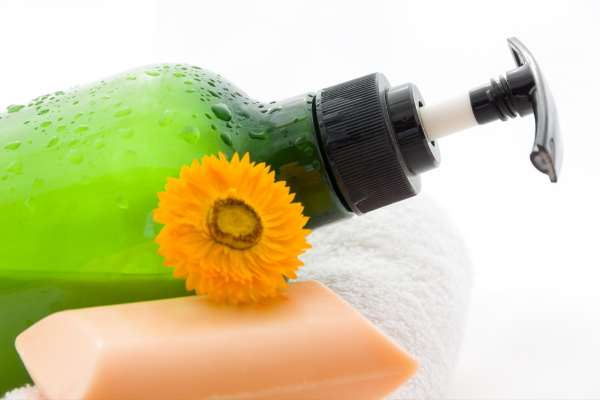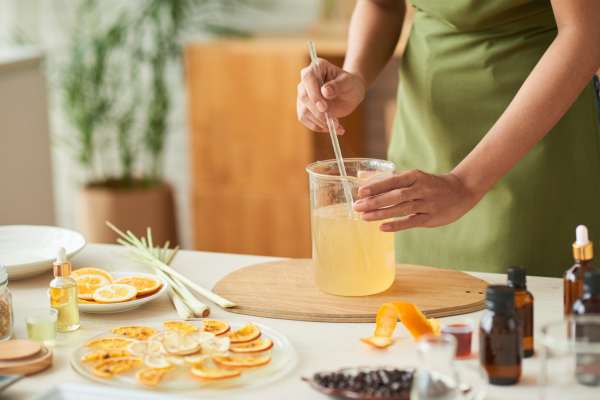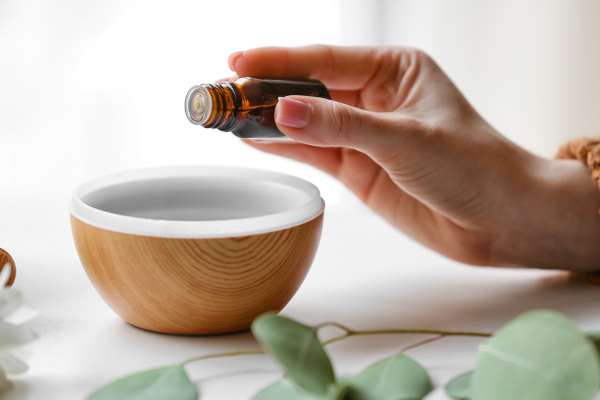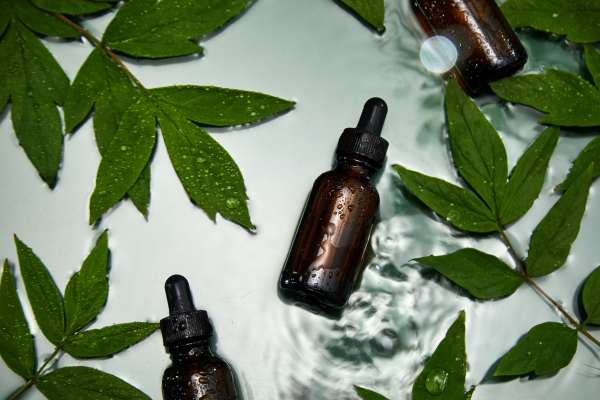Creating your own shampoo can be a rewarding experience, allowing you to tailor ingredients to your specific hair needs and preferences. This guide on “How to Make Shampoo” offers a straightforward approach to concocting your personal hair care product. By the end of this journey, you’ll have the knowledge to craft a shampoos that not only cleanses effectively but also nourishes your hair, using ingredients that are both beneficial and gentle. Whether you’re looking to avoid harsh chemicals, reduce plastic waste, or simply experiment with DIY beauty, this guide will set you on the right path.
Why Make Shampoo?
Opting to make your own shampoos is a choice embraced by many for its multitude of benefits. The primary advantage lies in the ability to select natural and nourishing ingredients, free from the harsh chemicals often found in commercial products. This customization ensures that your hair care routine is perfectly tailored to your hair type and scalp needs, potentially leading to healthier, more vibrant it. Moreover, crafting your own Clarifying shampoo do can contribute to environmental sustainability by reducing reliance on plastic packaging and minimizing your carbon footprint. The process also offers a sense of personal accomplishment and creativity, as you experiment with different ingredients and scents to create a truly unique product.
How Long Does Homemade Shampoo Last?
The shelf life of homemade shampoo can vary significantly depending on the ingredients used and how it is stored. Typically, a batch of DIY shampoos can last anywhere from a few weeks to several months. Preservative-free formulas, especially those made with fresh ingredients and without synthetic preservatives, tend to have a shorter lifespan and may need to be used within a month. To extend the longevity of homemade shampoos, it’s crucial to use distilled or boiled water to minimize bacterial growth, include natural preservatives where possible, and store the product in a cool, dark place. Additionally, using clean utensils and containers during the preparation process can help prevent contamination and extend the shelf life of your homemade shampoos.
Is Homemade Shampoo Suitable For All Hair Types?
Homemade shampoos can be an excellent option for various hair types, but its suitability largely depends on the specific ingredients chosen and how they interact with your hair and scalp. The beauty of DIY shampoos is the ability to customize formulations to address individual needs, whether for oily, dry, curly, straight, fine, or thick hair. For example, coconut milk and aloe vera can hydrate dry hair, while lemon juice and apple cider vinegar might be better suited for oily scalps. However, it’s important to note that there might be a period of adjustment as your hair transitions from commercial products to natural ones. Additionally, some individuals may need to experiment with different recipes to find the perfect match for their hair type, making homemade shampoos a versatile yet sometimes trial-and-error solution.
The Basics of Shampoo Making

Creating your own shampoos at home starts with understanding the basic components: a base, a surfactant to cleanse, and additives for specific hair needs. The base often includes water or herbal infusions as the primary liquid. Surfactants, which are responsible for the lathering and cleaning effect, can range from mild options like decyl glucoside to more natural choices such as saponified oils. Additives play a crucial role in tailoring your shampoos to your hair’s needs; these can include essential oils for fragrance and scalp health, natural oils for moisture, and herbal extracts for additional benefits. To make shampoos, these ingredients are combined in the right proportions, ensuring a balanced pH that respects the natural acidity of the scalp and hair. This process allows for endless customization, enabling the creation of a shampoos that is not only effective but also a pleasure to use.
Gathering Your Ingredients
Before you begin, it’s important to have all your ingredients and tools at the ready. You will need:
- A base (such as distilled water, aloe vera juice, or herbal tea)
- A surfactant for cleansing (like castile soap)
- Essential oils for scent and scalp health
- Additional additives (such as carrier oils, honey, or glycerin for moisture)
- A clean bottle or jar for storage
- A mixing bowl and spoon
Step-By-Step Guide To Making Your Own Shampoo
Step 1: Mixing The Base

Start by preparing your base. If you’re using herbal tea, brew it ahead of time and let it cool. Measure out about ½ to 1 cup of your base liquid and pour it into your mixing bowl. If you’re using castile soap as your surfactant, add it to the base now. A good ratio is about ¼ cup of castile soap to ¾ cup of liquid. Stir gently to combine without creating too much foam.
Step 2: Adding Essential Oils

Once your base and surfactant are mixed, it’s time to add essential oils. This not only gives your shampoo a pleasant scent but can also provide therapeutic benefits to your scalp and hair. Depending on the strength of the scent and its benefits, add 10-20 drops of essential oil per 8 oz of shampoos. Some popular choices include lavender for relaxation, peppermint for invigoration, and tea tree for its antimicrobial properties. Stir the mixture well to distribute the oils evenly.
Step 3: Customizing Your Shampoo

This step is where you can get creative and tailor your shampoos to your hair’s needs. For extra moisture, consider adding a teaspoon of carrier oil like jojoba or argan oil. If your hair is very dry, a tablespoon of honey or glycerin can be a beneficial addition. For those with sensitive scalps, ingredients like chamomile tea or aloe vera gel can soothe irritation. Once you’ve added your chosen ingredients, stir the mixture until everything is well combined.
Benefits Of Making Your Own Shampoo
1. Customization
One of the primary benefits of making your own shampoos is the ability to customize the formula to suit your specific hair type and concerns. Whether you have dry, oily, curly, or color-treated hair, you can select ingredients that specifically address your needs. This level of customization is not always possible with commercial shampoos, which are often designed to cater to a broad audience. By creating your own shampoos, you can experiment with different ratios of ingredients to find the perfect balance for your scalp and hair, adjusting for factors like moisture, protein content, and scalp health. This tailored approach can lead to better hair care outcomes, with products that work in harmony with your hair’s natural tendencies.
2. Natural Ingredients

Another significant advantage of DIY shampoo is the ability to use natural ingredients. Many commercial shampoos contain synthetic chemicals, preservatives. And fragrances that can strip hair of its natural oils, irritate the scalp, and contribute to environmental harm. By making your own shampoos, you can choose ingredients that are gentle, nourishing, and sustainable. Natural oils, herbs, and essential oils can provide a wide range of benefits, from moisturizing dry hair and soothing an itchy scalp to adding volume and shine. Moreover, using natural ingredients reduces your exposure to potentially harmful chemicals and supports a more eco-friendly lifestyle. This approach not only benefits your hair and scalp but also aligns with a broader commitment to health and environmental stewardship.
3. Cost-Effectiveness

Another noteworthy benefit of creating your own shampoo is the potential for cost savings. While the initial investment in pure, high-quality ingredients might seem higher, the long-term savings can be significant. Many of the natural ingredients used in homemade shampoos recipes, such. As coconut oil, castile soap, and essential oils, can be bought in bulk and used in a variety of personal care and household products. This multipurpose nature of ingredients, along with the ability to control the quantity. And avoid overpriced commercial hair care products, makes DIY shampoos an economical choice. Moreover, homemade shampoos often require only small amounts of each ingredient per batch, extending the life of your supplies a
Tips For First-Time Shampoo Makers
- Start Simple: Begin with a basic recipe to understand the process. As you become more comfortable, you can experiment with different ingredients.
- Research Ingredients: Understand the benefits of various ingredients and how they interact with your hair type. This knowledge will help you customize your shampoos effectively.
- Patch Test: Before using your shampoo for the first time, do a patch test to ensure you don’t have an allergic reaction to any ingredients.
- Be Patient: It may take time for your hair to adjust to natural shampoo. If your hair feels different at first, give it a few weeks to adapt.
- Preservation: Consider natural preservatives to extend the shelf life of your shampoos if you’re not using it quickly.
Conclusion
Making your own shampoo is not just a creative and enjoyable endeavor; it offers tangible benefits like customization, the use of natural ingredients, and cost-effectiveness. This personalized approach to hair care allows for a deeper connection to the products you use. Promoting a healthier lifestyle and environmental consciousness. By embracing the tips provided and experimenting with different formulas, first-time shampoos makers can unlock the full potential of DIY hair care. The journey to creating the perfect shampoo for your hair type can be both fulfilling and beneficial. Marking a significant step towards a more natural, sustainable, and tailored beauty routine.


